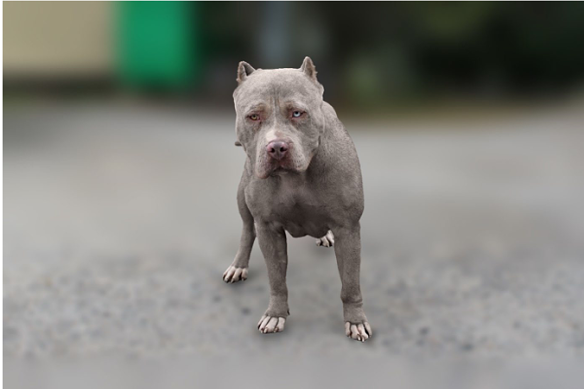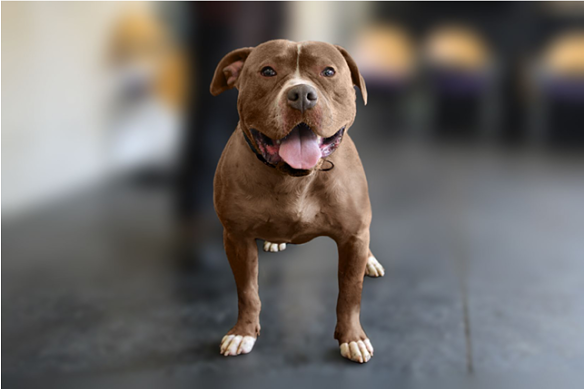By Rob Harris
What in the World, a free weekly newsletter from our foreign correspondents, is sent every Thursday. Below is an excerpt. Sign up to get the whole newsletter delivered to your inbox.
Greetings from London.
Nicholas Glass was described by his friends as a kind-hearted guy, a caring and compassionate soul who’d do anything for anyone.
A coronial inquest this week heard the 33-year-old was found dead in a Birmingham garden after suffering severe injuries from dog bites in the early hours of August 21. Tests later concluded that two of the four dogs that attacked him were of the recently banned “XL bully” . Neither had a certificate of exemption.

An XL bully dog.Credit: UK Government
Barely a week goes by in Britain now where radio or television news bulletins don’t carry a story of a man, woman or child being severely injured or mauled to death by a dog somewhere in the country. Sometimes in suburban London. Often in England’s north.
It’s an uncomfortable truth for a society that has been set up to accommodate pets. In the UK – unlike Australia – dogs aren’t just permitted on public transport but often openly encouraged. Many pubs and shops display waggish signs, reading, “Dogs welcome, people tolerated”, and have treat jars on their counters. Recently, I was in a bookshop in Bristol when a lady asked the owner if she could bring her pup inside.
“I’d be bitterly disappointed if you didn’t,” the owner replied.
But after 16 deaths as a result of dog attacks in the first nine months of 2023, the former Conservative government reacted to calls from community groups to ban the main culprit, the now notorious XL bully, saying the breed had been “disproportionately involved” in deaths recorded since 2021.

XL bully owners march through Westminster last October to protest then-prime minister Rishi Sunank’s proposed ban on the dog breed. Credit: Alamy
A campaign had begun in the tabloid newspapers the previous year following the deaths of seven people, including three children: 17-month-old Bella Rae Birch, four-year-old Alice Stones, and 10-year-old Jack Lis. The latter was mauled so badly by a 43-kilogram dog, Beast, that his mother had to identify him by his shoes.
XL bullies originated in the United States in the 1990s as a result of the fashion for “weapon” dogs and gangsta rap. The largest of the American bully breed − a mix of American pit bull terrier and American, English and French bulldog − they are thought to have been brought to the UK around 2014.
Many say they are genetically engineered with just one purpose in mind, to go into a pit and kill another dog. Yet somehow they have emerged as one of Britain’s most popular and beloved pets.
Although not recognised by kennel clubs as a specific breed, they are described as large dogs “with a muscular body and blocky head, suggesting great strength and power for [their] size”.
Ownership of XL bully dogs increased dramatically during the pandemic, quickly followed by an increase in abandonment. Irresponsible breeding, in turn contributed to the rise in attacks.
The dogs are often used as a status symbol by people involved in crime and gang culture. BullyWatch, the community campaign to ban them, suggested that 97 per cent of breeders were unlicensed.

XL bully dogs were bred as “weapon dogs”.Credit: UK Government
But since the ban came in just seven months ago, there have been at least seven more fatal dog attacks. In several cases, XL bullies killed their owners, including David Daintree, 53, in August, and Angeline Mahal, also in her 50s, in May.
More than 50,000 dogs were granted exemption applications before the February ban which makes it a criminal offence to own an XL bully without a certificate. It meant owners could keep their pets under the requirement they be muzzled and on a lead in public.
Data obtained by The Independent this week found the number of recorded incidents of out-of-control dogs injuring people or guide dogs has risen by nine per cent since the ban came in.
Despite the obvious horror at the many incidents and deaths involved, the ban has been met with huge opposition from animal welfare groups, such as the RSPCA and Dogs Trust, who have called for the new Labour government to review the legislation, arguing breed-specific bans are harmful to dogs’ welfare, and also do not protect the public.
They say the ban had been “devastating” for owners, some of whom will have felt they had “no choice” but to have their pets put to sleep. More than 400 were euthanised before the February deadline.
“This current approach is not working, as is evident by these figures, and needs a complete overhaul, not only to better protect public safety but also to ensure good dog welfare,” the RSPCA says.
But while the welfare groups say we should “blame the deed, not the breed” others believe it is this thinking that has caused carnage and grief.
“Labradors retrieve. Pointers point. Cocker spaniels will run through bushes, nose to the ground, looking as if they are tracking or hunting even when just playing – even when they have never been on a hunt of any kind,” legal academic and YouTuber Lawrence Newport wrote last year.
“This is not controversial. Breeds have traits. We’ve bred them to have them.”
The unfortunate reality is that the debate will continue to rage while more people die and more untrained pets are destroyed. And in many cases, the owners are more menacing than their dogs.
Get a note directly from our foreign correspondents on what’s making headlines around the world. Sign up for the weekly What in the World newsletter here.